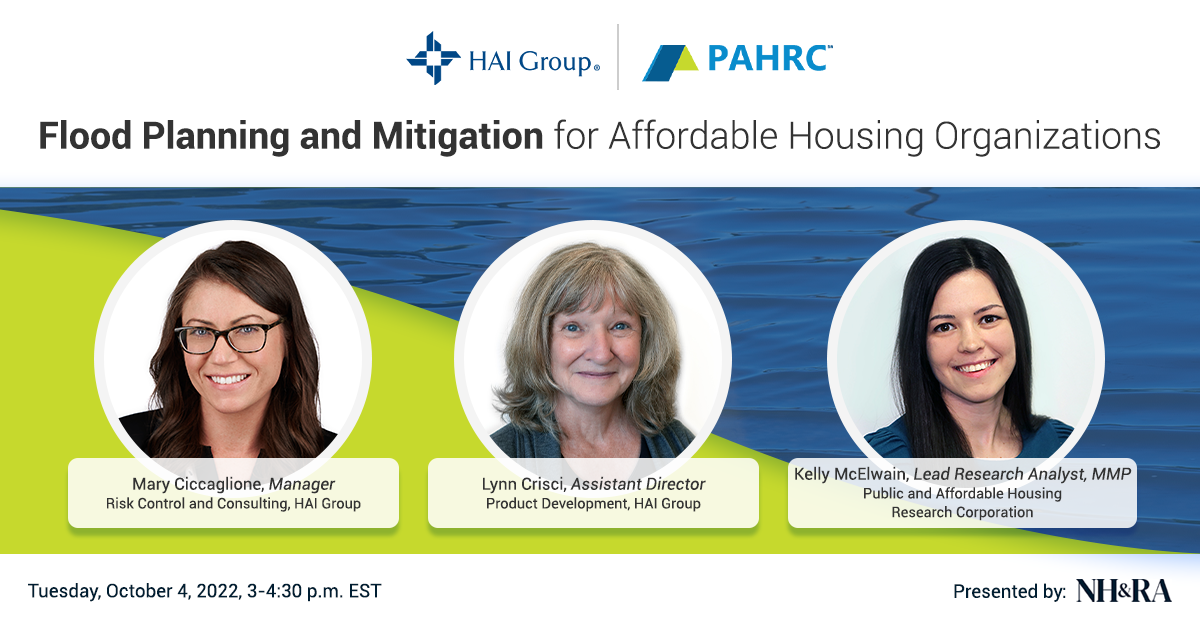Once upon a time, public and affordable housing providers enjoyed a certain freedom regarding wind and hail coverage—lender requirements weren’t as stringent, and coverage was readily available in most regions of the country.
 The relentless evolution of our climate and an uptick in severe weather patterns have altered the equation. Areas previously deemed low risk are now vulnerable, underscoring the imperative for insurance protection against wind and hail damage, according to Jodi Neubaum, a senior account executive with HAI Group’s Account Services team. Inflation and increased catastrophic exposure due to population growth and development in high-risk areas also factor into the increase in billion-dollar disasters in recent years, according to NOAA.
The relentless evolution of our climate and an uptick in severe weather patterns have altered the equation. Areas previously deemed low risk are now vulnerable, underscoring the imperative for insurance protection against wind and hail damage, according to Jodi Neubaum, a senior account executive with HAI Group’s Account Services team. Inflation and increased catastrophic exposure due to population growth and development in high-risk areas also factor into the increase in billion-dollar disasters in recent years, according to NOAA.
“Even in traditionally low-risk areas, the potential for severe weather events is on the rise, and having insurance coverage prepares housing organizations for unforeseen challenges,” Neubaum said.
Contextualizing wind and hail risk
Severe thunderstorms, far from mere displays of rain and thunder, frequently unleash destructive forces such as powerful winds and large hail, significantly contributing to property damage.
Severe thunderstorms accounted for a staggering 17 out of the 28 billion-dollar climate and weather disasters recorded in 2023, a year that saw a record number of such events, surpassing the 22 billion-dollar disasters in 2020. Inflation, increased exposure due to population growth, and higher exposure due to development in high-risk areas factor into the increase in billion-dollar disasters in recent years, according to NOAA. Here’s a summary of a few notable billion-dollar wind and hail events in 2023:
- March 24-26, 2023: A severe storm system with high winds resulted in $2.9 billion in damage across portions of Mississippi, Alabama, Georgia, Tennessee, Ohio, West Virginia, and Pennsylvania
- April 4-6, 2023: A severe storm system with large hail and high winds resulted in $2.9 billion in damage across portions of Illinois, Kentucky, Iowa, Indiana, Ohio, Missouri, and Michigan.
- April 19-20, 2023: A severe storm system with hail and high winds resulted in $3 billion in damage across portions of Texas, Missouri, Nebraska, Kansas, Iowa, Illinois, and Wisconsin.
- June 11-14, 2023: A severe storm system with hail and high winds caused $4.1 billion in damage across Texas, Louisiana, Arkansas, South Carolina, and Florida.
- June 21-26, 2023: Severe hailstorms caused $5.3 billion in damage across portions of Wyoming, Colorado, Minnesota, Indiana, Kentucky, and Arkansas.
- August 11, 2023: Golf-ball to baseball-sized hail caused $1.8 billion in damage across portions of Minnesota.
- September 23-24, 2023: Baseball-sized hail caused $1.7 billion in damage across portions of Texas, Oklahoma, and Missouri.
Between 2016 and 2023, the U.S. witnessed an average of 5,177 substantial hail damage reports and 14,883 wind damage reports annually, according to NOAA records. This nine-year period also saw a concerning surge in billion-dollar weather and climate disasters, totaling 150. Some scientists predict that the changing climate will only cause hailstorms to intensify in the future.
If you haven't encountered a substantial hailstorm before, here's a preview of what you might anticipate:
Wind and hail coverage essentials
In the past, standard property insurance policies often included wind and hail coverage, Neubaum said. When wind and hail coverage is not included in a standard policy, a separate policy must be obtained to address the risks associated with these perils.
If a property is in an area prone to frequent and severe weather events, insurers may view it as a higher risk and adjust coverage availability and pricing accordingly.
“It’s important for housing organizations to understand the specifics of their wind and hail coverage and any limitations or deductibles that may apply,” Neubaum said.
Besides addressing structural damage, wind and hail coverage can extend to replacing or repairing business equipment, inventory, and building assets. Additionally, it can help cover downtime and relocation costs incurred due to losses. Neubaum emphasizes the importance of reviewing policies for specific details, as coverage limits and deductibles vary.
Pricing and availability dynamics
Properties in high-risk wind and hail areas typically face higher premiums and limited coverage options. Still, regions less known for these weather forces can experience price increases and limitations due to shifting weather patterns and evolving climate dynamics. Neubaum said construction materials, coverage limits, and deductibles all factor into coverage pricing.
Lenders typically demand full wind and hail coverage, obliging the insured to purchase a policy with a limit equal to the total value of all insured properties. Neubaum recommends working with an insurance professional to attempt to negotiate lender requirements. Lenders aren’t always willing to waive requirements, she noted.
Layering wind and hail coverage with multiple providers is becoming common, especially for high-value portfolios. For instance, a housing provider that needs a $50 million wind limit to meet lender requirements might end up purchasing multiple policies to meet that limit.
Bottom Line: Evaluate your coverage to safeguard against wind and hail risks
Neubaum said it’s crucial to collaborate with your insurance professional to tailor policies to specific needs and risk profiles.
“Closely review your policies, and if necessary, discuss options with your insurance professional to ensure you have adequate coverage for wind and hail, especially if your properties are in areas prone to these weather events,” she said.
Related resources from our Risk Control and Consulting team:
Are you interested in working with HAI Group to secure wind and hail coverage? Our Account Services team is ready to assist you.
This article is for general information only. HAI Group makes no representation or warranty about the accuracy or applicability of this information for any particular use or circumstance. Your use of this information is at your own discretion and risk. HAI Group and any author or contributor identified herein assume no responsibility for your use of this information. You should consult with your attorney or subject matter advisor before adopting any risk management strategy or policy.







